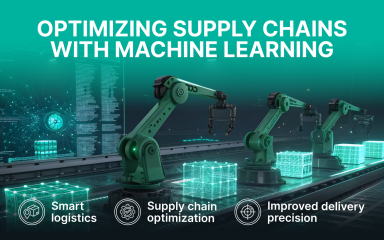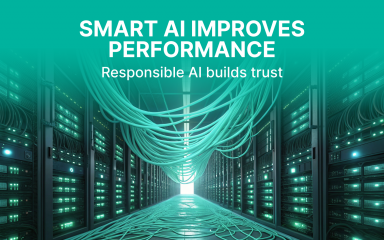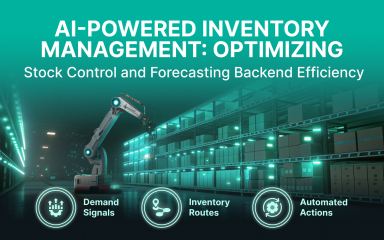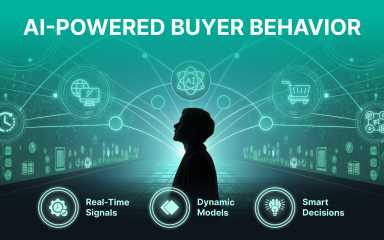Companies that are steadily developing and expanding inevitably sooner or later face a situation where there is too much product data and its quality is deteriorating. These problems lead to the fact that your products take longer to reach various trading platforms, while your customers don’t receive fully correct information about products and services. This directly affects sales, audience loyalty, and brand image.
Gepard PIM platform has already harnessed the power of AI-driven solutions to automate and streamline data mapping — a complex and critical process in product content syndication and enrichment.
This Bintime Tech Talk delves into the intricacies of Gepard’s AI Mapping development, exploring its technology stack, challenges, and transformative benefits for eCommerce businesses.
Introduction to Data Mapping
Data mapping is all about understanding how information flows from one system to another — and making sure it gets there accurately. Think of it as creating a blueprint that shows how different pieces of data relate, transform, and connect across platforms. To do this well, it’s important to understand not just the data itself, but also the context and meaning behind each field.
This process is a key part of data integration, helping ensure that the information being transferred is accurate, consistent, and complete. Traditionally, data mapping could be time-consuming and prone to human error. But with the rise of artificial intelligence, that’s changing fast. AI can now automate much of the mapping process — analyzing incoming data, recognizing patterns, and even suggesting how fields should match up.
By using AI-powered tools, businesses can dramatically cut down on manual work, improve data quality, and speed up integration projects. The result? Cleaner, more reliable data that’s ready to support better decisions and smoother operations.
Automate Data Mapping
Automating data mapping is a game-changer for businesses that want to simplify and speed up their data integration efforts. Instead of manually matching up fields like product IDs, quantities, or shipping info, AI-powered tools can handle it automatically — and with a high level of accuracy.
These smart systems can quickly identify relationships between data fields from different sources and map them correctly, cutting down on time, effort, and the risk of human error. That means cleaner data and fewer issues down the line. Automation also ensures consistency, which is essential when you’re pulling in data from various platforms or partners.
By automating the mapping process, organizations can significantly reduce the workload for their teams, freeing up time for more strategic work. Plus, with more reliable data flowing through their systems, companies get a clearer, more complete picture of their operations — helping them make faster, smarter decisions.
In short, AI-powered data mapping doesn’t just save time — it improves data quality, enhances operational efficiency, and helps businesses stay agile in a data-driven world.
What was the AI Mapping Development Tech Stack?
Gepard’s technology stack primarily revolves around OpenAI, with a specific focus on the ADA model for text-to-vector transformation. OpenAI plays a main role in automating the mapping process between various attributes, categories, and attribute values.
“For instance, when a customer provides their unique product data, OpenAI matches it seamlessly with marketplace requirements. This automation significantly reduces the need for manual interventions and speeds up the mapping process.”
Why was the ADA model chosen over other OpenAI embedding models?
When Gepard embarked on this AI-driven initiative, the ADA model was the only embedding model available from OpenAI. As OpenAI expanded its offerings, ADA continued to be our choice due to its proven effectiveness in translating text into meaningful embeddings (vectors). These vectors enable accurate comparison and matching of textual data, making ADA invaluable for our mapping needs.
Challenges of Creating AI Data Mappings
Initially, our developers considered using prompts as a mechanism for data comparison within the OpenAI framework. They thought that they would initially add some specific prompt for comparing the data — and ask OpenAI to analyze whether these values are similar to each other. However, this approach proved to be both costly and less effective in comparison to using embeddings.
Handling of complex data structures
“In fact, the product can map, for example, 2 complex taxonomies with hierarchical nesting, which have 20-30 thousand entries.”
Even though OpenAI facilitates only 1:1 mappings, the Gepard platform manages more complex mappings involving millions of products, thousands of categories, and tens of thousands of attributes.
Data Integration
Data integration is all about bringing together information from different sources and creating a single, unified view. It’s a critical step for businesses that want to understand their customers, track operations, and stay on top of market trends. This process typically involves connecting different systems, applying mapping logic, and transforming the data into a consistent format that can be easily used across platforms.
In today’s fast-paced, data-driven world, manually stitching together data just isn’t practical anymore. That’s where AI-powered data mapping comes in. With automation, companies can quickly and accurately integrate data from various sources — whether it’s customer databases, medical records, police reports, or other systems — without the headaches of manual processing.
This not only speeds up integration but also improves data quality and reduces errors. The result? Businesses get cleaner, more reliable data they can trust. By using AI to power their data integration efforts, organizations can scale faster, make smarter decisions, and operate more efficiently.
Data Ingestion
Data ingestion is the process of gathering data from multiple sources, processing it, and loading it into a system where it can be analyzed or used. But as data volumes grow and sources become more complex, traditional ingestion methods often fall short — they’re slow, manual, and prone to mistakes.
AI-powered data ingestion offers a smarter solution. These systems can automatically detect, map, and ingest incoming data into the right format, reducing the need for manual setup and significantly cutting down on errors. This makes onboarding new data sources — like clients or vendors — much faster and smoother.
By streamlining the data ingestion process, businesses can access real-time insights and make informed decisions more quickly. Plus, with better data quality and a more efficient workflow, teams can focus less on fixing errors and more on acting on what the data is telling them.
In short, AI-powered ingestion helps companies keep up with the pace of modern data demands — improving accuracy, saving time, and giving them a real edge in a competitive, data-driven world.
Tips to optimize the performance of AI mappings
In optimizing the performance of AI-driven data mapping, the Bintime team prioritizes the sequence of operations to ensure efficient and accurate results. Vector databases play a crucial role in this optimization, as they are essential for working with OpenAI’s embeddings.
While we can’t enhance the model’s intrinsic accuracy, the focus remains on refining the mapping process for maximum efficiency and reliability.
How do you manage the costs associated with using OpenAI for mapping over 120 million products monthly?
Despite the costs associated with OpenAI’s services, Gepard’s AI mapping solution offers substantial cost savings compared to manual processes. By utilizing AI, Gepard reduces costs by approximately 70%, making the investment in OpenAI’s technology financially viable.
“On average, Bintime team expenditure on OpenAI amounts to around $5 per year, highlighting the cost-effectiveness of AI-driven solutions at scale.”
How does the AI mapping adapt to catalog & data changes over time?
Gepard AI-driven mapping relies on embeddings, which consistently return the same representations for identical phrases or data points. This consistency ensures that the system remains adaptable to changes in client data or data structures.
“Even if there are alterations in product names or catalog structures, the system’s reliance on embeddings ensures that these changes are not detrimental to the mapping process.”
How do you manage error correction in AI Mappings?
Understanding the potential for inaccuracies in data comparison, Bintime employs a proactive approach to error correction. The system considers multiple data-matching options and presents users with the most relevant and accurate data choices.
“By anticipating potential errors and providing users with multiple relevant options, we minimize the likelihood of incorrect or inaccurate data mappings.”
Future Tech Trends
Bintime is exploring the possibility of leveraging custom AI models to enhance the usage of OpenAI’s general-purpose capabilities. In our opinion, Custom models could offer tailored solutions to specific mapping challenges, potentially improving accuracy and efficiency.
“As the AI landscape evolves, we are also keeping an eye on advancements in computing power, aiming to harness more potent AI capabilities for future projects.”
Conclusion
Gepard AI mapping development shows a real-life example of AI in eCommerce product data management. By integrating OpenAI’s cutting-edge technologies, the Bintime development team has achieved 70% higher efficiencies, reduced manual efforts, and ensured data accuracy, setting new industry standards.
If you are looking for implementation of AI-driven solutions — you can easily partner with us to innovate, automate, and elevate your business to new heights. Contact us today to explore collaboration opportunities.










